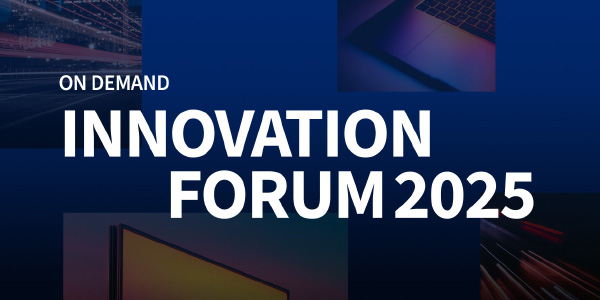AI and Brand Safety in Advertising: Risks, Tools, and What Comes Next

Brand safety is no longer a technical detail—it’s a strategic risk. In 2025, the stakes have climbed well beyond bad placements or awkward adjacencies. One misstep in a volatile digital environment can erode brand equity, trigger backlash, and drag down media ROI. And with 53% of US marketers now naming social media as the top threat to their brand’s reputation, the concern is no longer theoretical.
The speed and scale of content today, amplified by artificial intelligence, have outpaced traditional safeguards. AI now plays both roles: a tool for real-time screening and a generator of risk through synthetic content, deepfakes, and misinformation.
For marketing leaders, the real question is: Are your brand controls evolving as fast as your media strategy? Teams need adaptive systems that combine intelligent automation with human oversight.
This article discusses what’s at stake, how AI is deployed to manage brand safety, and why leading brands are shifting toward a hybrid model that protects performance without sacrificing control.
What Brand Safety Means Today
At its core, brand safety protects a brand’s reputation by avoiding ad placements next to harmful or inappropriate content. This includes obvious threats like hate speech, graphic violence, misinformation, and sexually explicit material. But it also extends to content that simply feels off-brand—topics or tones that may not align with a company’s values or audience expectations.
However, the conversation has evolved. Brand safety has expanded into brand suitability. It’s no longer just about keeping ads away from dangerous content. It’s also about finding the right environments that reflect a brand’s voice, tone, and purpose. For example, a bold sports brand may welcome placement next to edgy commentary or action-heavy videos, while a healthcare brand might avoid anything that even hints at controversy.
This shift requires advertisers to move from a simple checklist of “block this content” to a more nuanced approach. Suitability focuses on positive alignment, choosing contexts that reinforce the brand message rather than just avoiding risk. As media environments get more complex, this shift is becoming critical for building trust and staying relevant.
For leadership, this raises a larger question: What policies and governance structures should guide decisions around what is suitable or off-brand? Teams need clarity not just on what to block, but on what reinforces brand equity across every channel.
The Risks Brands Are Facing
For marketing leaders, the challenge is managing risks across fragmented teams, multiple agencies, and fast-moving environments. One reputational misstep can quickly become a governance issue, especially when boards or clients demand answers.
The digital ad landscape has become a patchwork of platforms, formats, and content sources, each with its own set of challenges. From unmoderated social posts to opaque connected TV (CTV) inventory and real-world placements with limited oversight, brand safety risks are no longer confined to a single channel. At the same time, broader cultural and technological shifts—like the rise of generative AI—are introducing new threats at scale.
Here’s a breakdown of the key risks brands face today:
| Channel / Threat | Main Risk Factors | Why It Matters |
| Social Media | User-generated content. Viral, fast-moving trends. | High likelihood of unpredictable, brand-damaging associations. |
| CTV | Limited transparency. Sparse content-level metadata. | Sometimes hard to verify ad placements, increasing the risk of appearing in unsafe content. |
| Digital Out-of-Home (DOOH) | Minimal real-time control. Weak contextual targeting. | Difficult to react to current events or control message relevance. |
| Misinformation | False or misleading narratives. Politically or socially charged content. | Can damage credibility and misalign with brand values. |
| Generative AI Content | Deepfakes. AI-written articles and manipulated media. | Synthetic content can appear legitimate, spreading disinformation at scale. |
| Cultural Shifts | Rapidly changing norms. Global differences in tone, humour, and values. | Increases the chance of unintentional offence or reputational harm. |
As complexity grows, so does the need for clear internal accountability. Who owns these risks? Who decides what level of risk is acceptable? The answers often aren’t documented—and that’s the gap AI alone can’t close.
Even with the most advanced filters, context and nuance often slip through the cracks. That’s why many marketers are now shifting from a rigid “avoid at all costs” mindset to a dynamic approach that blends technology with human judgment. Knowing where the risks lie is the first step toward building a smarter, safer media strategy.
How AI Is Used to Support Brand Safety in Advertising
AI has become central to how marketing teams manage risk, reduce inefficiencies, and scale media investments with confidence. The real value for decision-makers lies not in how the technology works, but in what business problems it helps solve. Each AI capability addresses a core concern at the leadership level—ensuring that campaigns are not just efficient, but also aligned with brand values and public trust.
Natural Language Processing (NLP) and Large Language Models (LLMs)
Modern NLP tools, powered by LLMs, can:
- Analyze not just the presence of keywords, but the tone, context, intent, and sentiment of content.
- Detect sarcasm, hate speech, or misinformation, even when it’s subtle or implied.
- Adapt to evolving language patterns, including slang or coded speech.
This makes them far more effective than traditional systems that rely solely on static word lists.
One of the key challenges leaders face is maintaining brand protection without sacrificing performance. NLP and LLMs help solve this by analyzing context, tone, and sentiment across text-based environments. Instead of simply blocking pages based on keywords, these models understand the meaning behind the language. They help teams filter out subtle threats like sarcasm, coded language, or misinformation, while preserving access to high-quality, brand-appropriate inventory. This improves targeting precision and reduces unnecessary media loss.
Computer Vision
Visual content is equally risky, and AI-powered computer vision helps by:
- Scanning images and video frames for explicit, violent, or unsafe visuals.
- Identifying logos, symbols, or scenes that may be inappropriate or off-brand.
- Flagging content that may not be captured by text-based analysis.
As advertising shifts toward video-first platforms such as CTV, Instagram, and YouTube, visual risk becomes harder to manage through text-based analysis alone. Computer vision allows platforms to scan video frames and images for unsafe visuals, such as violence, nudity, or controversial symbols, and block placements that might damage brand perception. For leaders concerned about where their brand shows up, especially in high-visibility channels, this adds a crucial layer of visual intelligence to their safety strategy.
Machine Learning
Machine learning acts as the glue that holds everything together:
- It recognizes patterns across content types, platforms, and campaigns.
- Continuously improves over time through feedback loops and user input.
- Enables systems to become more accurate and less reliant on rigid rules.
The more campaigns run through the system, the better it gets at anticipating risk.
The ability to scale media without losing control is a constant concern. Machine learning helps by identifying patterns in campaign performance, placement quality, and flagged risks. Over time, these systems learn from feedback, post-campaign audits, and advertiser input, improving their accuracy and reducing false positives or negatives. This means fewer surprises, less media waste, and a tighter feedback loop that improves campaign results across the board.
Application in Programmatic Advertising
AI tools are now deeply embedded into programmatic workflows:
- Pre-bid Filtering: Before an ad is placed, AI can evaluate the content of the page, app, or stream. If the environment looks safe, the demand-side platform (DSP) proceeds. If it’s flagged as risky, the bid is skipped. This happens in milliseconds.
- Post-bid Audits: After the ad is delivered, AI systems review where the placement landed. Any issues are logged and fed back into the model to improve future targeting and avoid repeat mistakes.
Together, these systems create a more adaptive and scalable approach to brand safety—one that can keep pace with the speed and complexity of modern media environments.
Brand safety technology has to fit into real workflows, not operate on the sidelines. AI is now integrated into programmatic buying at two critical stages. Pre-bid filtering evaluates content before the bid is placed, helping teams avoid risky placements without delay. Post-bid auditing looks at where ads landed and feeds that insight back into the system to inform future decisions. This helps marketers respond quickly, adapt their strategy, and maintain brand alignment across increasingly fragmented media environments.
For marketing leadership, AI is becoming an operational necessity. It supports faster decisions, sharper targeting, and more consistent brand outcomes—even in a media landscape defined by constant change.
The Limits of AI in Brand Safety
No executive wants to explain a brand safety failure by blaming the algorithm. The reality is that even the best AI systems require human governance—review, escalation paths, and a culture of accountability. The tools are only as strong as the judgment behind them.
While AI has transformed brand safety practices, it remains far from infallible. One of the most persistent challenges is the interpretation of satire and cultural references. Even human moderators can struggle to distinguish between irony, parody, and genuine harm, so it’s no surprise that AI models, which lack lived experience and contextual understanding, often misread these cues. The result can be misclassification or overcorrection, especially in global campaigns where cultural nuance varies widely.
Another issue is timeliness. AI systems aren’t always equipped to respond to fast-evolving content. News cycles shift hourly, memes change overnight, and what’s considered acceptable or relevant one day can become problematic the next. Without frequent updates and human oversight, AI can lag behind, missing the contextual shifts that define modern media environments.
The rise of deepfakes and hyperreal synthetic content also pushes AI to its limits. As generative tools become more sophisticated, harmful or misleading content becomes harder to detect, even for trained eyes. AI needs to catch up not only in recognition but in verifying authenticity across formats like video, audio, and manipulated text.
There’s also the persistent trade-off between false positives and false negatives. When AI systems are too cautious, they may block safe, high-quality content, limiting campaign reach and performance. On the flip side, if filters are too loose, harmful or inappropriate material can slip through. Striking the right balance requires more than just automation. It depends on well-designed feedback loops, ongoing audits, and collaboration between advertisers, DSPs, and brand safety experts.
In short, AI brings power and precision, but it still requires human intelligence to manage complexity, interpret context, and make the final call.
Why Human Oversight Still Matters
This is not just a staffing conversation. It’s a leadership one. If AI makes the wrong call, who is accountable? Without a clear operating model for human review and escalation, brands risk confusing automation with absolution.
That’s why despite all the advancements in AI, StackAdapt continues to rely on a hybrid model where human expertise remains central. AI may power the scale and speed needed to process today’s media environments, but it doesn’t replace human judgment. It simply supports it.
From the start, StackAdapt’s approach to brand safety was rooted in manual verification. Eight years ago, the platform relied entirely on human reviewers to assess whether content was safe for advertisers. That same principle holds true today, even as AI tools have been layered in to streamline and scale the process. The role of AI is to flag potential risks, not to decide on its own what crosses the line.
That decision still rests with trained professionals. Human reviewers handle edge cases that automation can’t parse, such as ambiguous satire, subtle misinformation, or regional sensitivities. They also bring in brand-specific context, understanding that what’s acceptable for one advertiser may be entirely inappropriate for another. For example, a sports clothing brand might welcome edgier content, while a nonprofit may require a more conservative filter. These nuances are rarely captured by algorithms alone.
Crucially, humans make the final call on controversial or borderline content, especially when reputational risk is on the line. AI can suggest, but it can’t truly understand tone, cultural dynamics, or the long-term brand impact of being associated with certain topics.
As generative content and synthetic media grow more sophisticated, this human layer becomes even more important, not less. AI may be fast and scalable, but human oversight is still the gatekeeper of trust.
Brand Suitability: A Moving Target
While brand safety focuses on keeping ads away from harmful content, brand suitability is about strategic alignment. It asks not just “Is this safe?” but “Is this the right environment for this brand?” That distinction matters more than ever in today’s nuanced media landscape.
Suitability thresholds aren’t universal. Even within the same organization, tolerance levels might vary by campaign or audience segment. This variability means that rigid, one-size-fits-all filters often do more harm than good, either by blocking valuable inventory or by allowing content that feels off-brand.
Instead of relying solely on binary rules, many advertisers are now adopting suitability tiers. These offer a more flexible framework where content can be graded by level of risk or alignment. This allows marketers to fine-tune their campaigns, adjusting thresholds based on brand values, messaging tone, or context.
Customization is essential. Advertisers should be able to dial safety settings up or down, not just across industries, but across specific activations. A product launch aimed at Gen Z may embrace more irreverent content than a brand awareness campaign targeting older professionals. AI tools can support this flexibility by offering content scores or categories, but they still require human calibration.
In this sense, brand suitability is a moving target. It evolves with the brand, the audience, and the cultural moment. The advertisers who manage this best are the ones treating suitability not as a constraint, but as a strategic input that helps amplify the message, not mute it.
Suitability decisions often get made in the moment—by agencies, media buyers, or platform filters. But without documented policies at the leadership level, brands risk inconsistency across campaigns. The brands that succeed treat suitability as a strategic governance function, not an ad ops setting.
Future Outlook: What’s Next for AI and Brand Safety in Advertising
The next phase of AI in brand safety is already taking shape, and it’s not just about better algorithms, but smarter application. As technology evolves, we can expect tools with deeper cultural literacy, capable of interpreting nuance, context, and tone with far more precision. These systems won’t just flag problematic content; they’ll begin to understand why it’s problematic within specific cultural or brand contexts.
We’ll also see the rise of platforms that help advertisers define their own safety frameworks. Instead of relying on pre-set filters, brands will be able to codify their values, tone preferences, and risk thresholds directly into AI-driven tools. This means fewer generic settings and more tailored protection that evolves alongside the brand.
But the biggest challenge ahead is operationalizing these capabilities. It’s one thing to build sophisticated AI systems and another to integrate them into the daily workflow of programmatic buying. Advertisers will need to align teams, set clear policies, and train both machines and humans to work together. And that process takes more than flipping a switch.
There’s also the ongoing tension between transparency, control, and scale. Advertisers want to know where their ads appear, but they also want to reach broad audiences efficiently. AI can help balance these demands, but only if it’s guided by real-world data and reinforced by thoughtful oversight.
The bottom line: AI won’t solve brand safety alone. It’s a powerful tool, not a self-driving solution. Ongoing training, regular audits, and strategic input are still required to make sure it delivers not just accuracy, but trust. The future belongs to those who treat AI as a partner, not a shortcut.
Your brand’s reputation deserves more than a one-size-fits-all solution. Let’s talk about how StackAdapt can help you navigate brand safety with confidence—tailored to your values, channels, and growth goals. Connect with our team to start the conversation.






